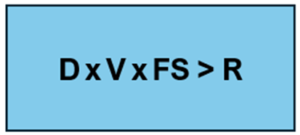
D x V x FS > R, also known as the “Change Formula,” was initially conceived by David Gleicher and later refined by Kathie Dannemiller. This formula offers a powerful framework for understanding the key elements that need to be in place to overcome resistance and drive successful change.
Here’s what each component represents:
· D (Dissatisfaction with the Status Quo): This is the level of dissatisfaction or discomfort that individuals or groups feel with the current situation. If people are unhappy or frustrated with the way things are, they are more likely to support change. Essentially, this element answers the question: Why is change necessary?
· V (Vision for the Future): Vision refers to the clarity and appeal of the desired future state. It provides direction and motivation, helping people understand where they are going and why the change is important. This element answers the question: What does success look like?
· FS (First Steps): First Steps are the actionable, initial moves that need to be taken to start moving toward the vision. These steps should be clear, achievable, and provide momentum for the change process. This element answers the question: How do we begin the change process?
· R (Resistance to Change): Resistance represents the natural pushback or reluctance that people feel towards change. It can stem from fear, uncertainty, or satisfaction with the current state. Resistance is the barrier that must be overcome for the change to succeed.
